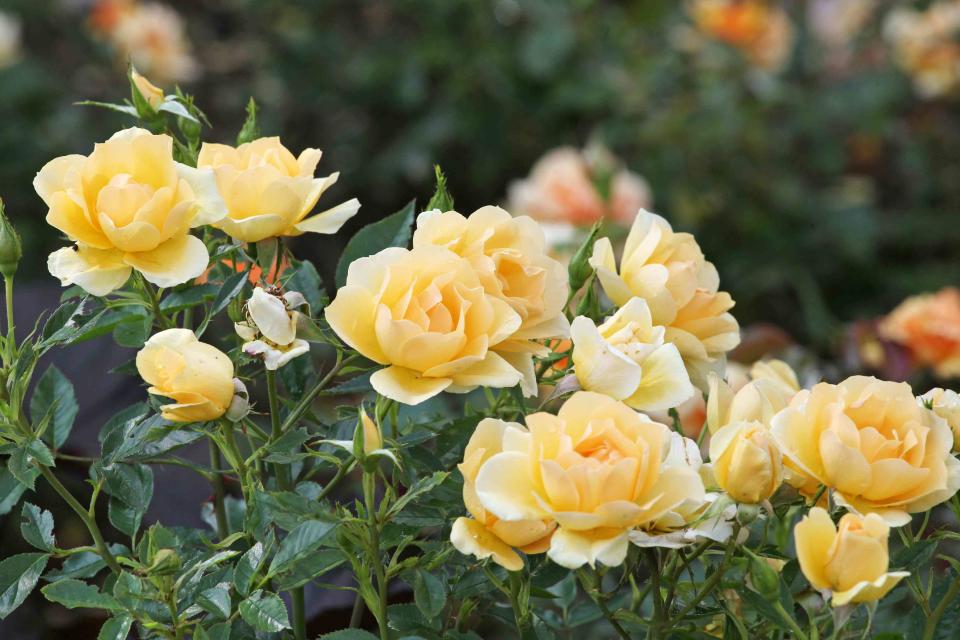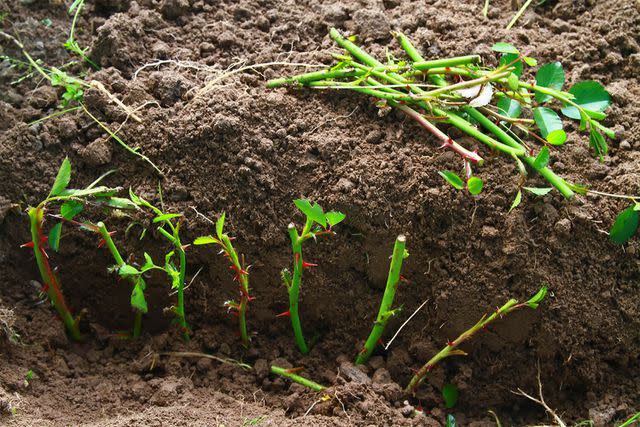How to Grow Roses From Cuttings—Plus Expert Tips for Ensuring Success
Healthy cuttings from your current garden can grow into successful new plants with these expert techniques.

Alex Manders / Getty Images
Whether you fancy English, hybrid, tea, miniature, Knock Out, or any of the other 1,000-plus rose varieties, these iconic blooms are a staple in every garden. The fragrant, woody-stemmed plants pair well in mixed flower beds or hold court on their own, climbing pergolas and trellises or blooming on show-stopping bushes.
If you've seen success with your current crop of roses in previous seasons, you may want to consider taking and establishing cuttings to expand your rose empire. Below, David Filter, the owner of English Garden Florist and a BloomNation affiliate, walks us through the process.
Meet Our Expert
David Filter, the owner of English Garden Florist and a BloomNation affiliate
Related: How to Grow and Care for All the Roses in Your Garden
How to Take a Rose Stem Cutting
A clean, healthy stem cutting can form the basis of a brand new rosebush.
Materials Needed
Pruning shears or sharp knife
Instructions
Look for a 4- to 6-inch piece of stem near the top of the plant (never cut the tip since that is where the plant is still growing).
Use sharp pruning shears to snip below a node, the area where new leaves form, leaving approximately three nodes on the top half of the stem.
Make sure that the upper half of your clipping has leaves so your plant can receive nutrients once it's replanted in soil.
Repeat the process. Filter recommends taking several clippings at once since it's unlikely all of the cuttings will yield growth.
Related: How to Prune Roses the Right Way
How to Grow Roses From Stem Cuttings
Plant the stem cuttings in small pots; after a root ball forms, move them to your outdoor garden.
Materials Needed
Powdered rooting hormone
Small plastic pots or other containers
Soil mixture
Instructions
Moisten the bottom of each stem and dip it into a rooting hormone powder, which can help stimulate growth, says Filter.
Clean used plastic containers or small pots with bleach and water to remove lingering bacteria.
Plant one clipping per vessel in a nutrient-rich soil mixture.
Place the pots in a well-lit area.
Water regularly while the cuttings grow; keep the soil moist, but don't overwater.
When a root ball forms—typically after about one week—transplant the cutting to the ground.
Related: How to Use Rooting Hormone to Successfully Propagate Your Plants

Alex Manders / Getty Images
Tips for Growing Roses From Cuttings
Filter provides these best practices for helping your delicate stem cuttings grow into thriving roses.
Check the Root Ball
After planting your cutting in its first small pot, watch the leaves for signs of success. If the existing foliage remains "perky and attached to the plant," then you know the clipping will make it, says Filter. It should take about a week for the roots to take hold. Gently lift one of the plantings out of its container to check for roots. If a root ball is evident, then it's likely your other clippings are in a similar state and ready to be transplanted.
Protect the New Plant
After planting your cutting in the ground, water it regularly. You can expect to see new buds form within three to four months. During the first or second winter after your plants have been propagated, Filter suggests protecting the young leaves with a chicken wire enclosure, burlap, or extra mulch around the base of the plant.
Watch for Signs of Pests and Disease
Roses are prone to pests, such as spider mites—symptoms of which can appear as discoloration or dark spots on foliage. If you find yourself faced with these pesky creatures, clip off infected leaves with shears and wipe the remaining foliage with a damp cloth. Furthermore, keep an eye out for powdery mildew, which presents as a white, powdery substance. Clip off leaves exhibiting mildew and spray the plant generously with a fungicide.
Read the original article on Martha Stewart.

